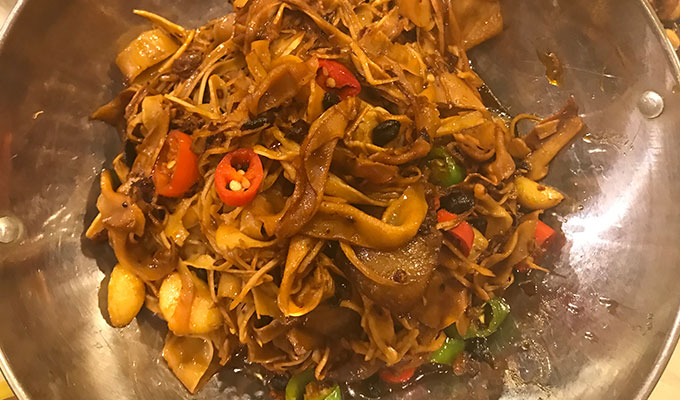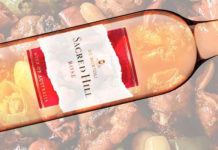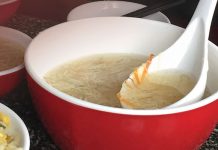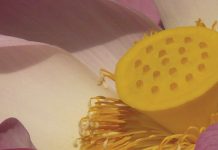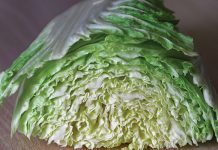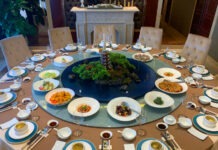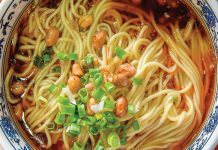If you were anything like me, when you first arrived in China, you would never have known that one can actually eat bamboo. Scaffolding sure, furniture of course, heck even bedding why not, but as a food, it seemed absurd.
However, after having spent some time getting used to the idea, I’ve jumped on the bamboo band wagon (so to speak), and have chomped my way into finding out everything there is to know about how the Chinese cook with bamboo.
That we are actually eating indeed comes from the shoots that sprout up alongside the bamboo plant itself, and as it is one of the fastest growing vegetables, supply is never short. Resembling little black gnomes, they belong to the Bambusoideae subfamily of grass, and in spring and early summer (in some parts of China, winter too) they are plucked and harvested for the kitchen.
The Chinese refer to bamboo shoots as “zhu sun jian” or “sun jian”, but mostly as simply “sun” (竹). Once it has been yanked from the earth, its outside layer resembles a corn husk. It is then stripped back layer by layer until its smallest part remains; this is the part that is then boiled four or five times. Boiling the fresh bamboo, or soaking it overnight, comes highly recommended, for it contains cyanide that needs to be eliminated before it can be eaten!
Culinary usage of bamboo in Chinese cuisine dates back to literature that emerged during the Tang dynasty (618CE-907CE), works that specifically estoll the plant’s great health benefits. Today’s findings conclude that the eating of bamboo can provide an array of nutritional value, such as being diet friendly, as a result of its low calorie, sugar and fat content. It is high in protein, vitamins, minerals and fiber, while bamboo is also said to aid weight loss, heart health, cholesterol balance, cancer treatment, bowel movement, while being an anti-inflammatory and more.
In China, we can buy canned, packaged, or fresh bamboo. The packaged kind I find in Suguo, sitting amongst the mushrooms in the fresh produce section. I believe these have been soaked, thus making them ready to eat, and I find them delicious. I simply open the package, pour out the water and add it straight to my wok or pot. I believe the canned version works the same way. However, as mentioned above, be sure to boil the bamboo four or five times if you have opted to buy it fresh, in order to rid it of toxins.
The Chinese (and people all over Asia, for that matter) tend to either stir-fry the bamboo or boil it in soup. Bamboo is a versatile vegetable with which to cook, in terms of its flavour-ability aspects. Naturally, found exclusively in Asian cooking, almost any other flavours can be added to bamboo. If presented in large strips, it is usually soft, yet crisp in texture, but not chewy. If the bamboo comes shredded, then it may feel textually somewhat similar to mushroom.
Some common Chinese bamboo dishes
- Sichuan spring bamboo shoot stir fried with pork slices
- Pickled bamboo shoots and duck soup
- Braised spring bamboo shoots
- Laotian bamboo salad
- Soup with pork, bean sprouts, bamboo shoots and mushrooms
- Braised tofu with mushroom and bamboo shoots
- Menma (Seasoned Bamboo Shoots) with Ramen
- Bamboo dumpling fillers


